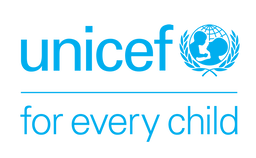Comprehensive social protection systems are critical in supporting children and families. Social protection prevents families from falling into poverty and helps them avoid negative coping strategies by increasing access to a range of services, especially for the poorest, including in crisis contexts.
No data on Children reveiving child or family benefits
No data on the Regional average of Children reveiving child or family benefits
Source
No data on Expenditures on social protection for children
No data on the Regional average of Expenditures on social protection for children
Source
No data on Population covered by at least one social protection benefit
No data on the Regional average of Population covered by at least one social protection benefit
Source
No data on Population with severe disabilities receiving disability cash benefit
No data on the Regional average of Population with severe disabilities receiving disability cash benefit
No data on the Regional average of Children reveiving child or family benefits
Source
No data on the Regional average of Expenditures on social protection for children
Source
No data on the Regional average of Population covered by at least one social protection benefit (%)
Source
No data on the Regional average of Population with severe disabilities receiving disability cash benefit
Child poverty can be measured using monetary and multidimensional approaches, and both measurements are required under SDG monitoring.
Monetary measures count children as poor if they’re living in households below a set poverty line.
Multidimensional measures can provide a fuller picture of poverty as they capture non-income aspects of poverty such as malnutrition, ill health and poor living conditions
No data on Monetary child poverty (national poverty lines)
No data on Monetary child poverty (below $ OECD)
No data on the Regional average of Monetary child poverty (below $ OECD)
Source
Multidimensional measures can provide a fuller picture of poverty as they capture non-income aspects of poverty such as malnutrition, ill health and poor living conditions
No data on Prevalence of multidimensional child poverty
No data on the Regional average of Prevalence of multidimensional child poverty
Source
No data of children living in multidimensionally poor households (Multidimensional Poverty Index 2022)
No data on the Regional average of Children living in multidimensionally poor households
Source
Source
No data on the Regional average of Monetary child poverty (below $ OECD)
Source
No data on the Regional average of Prevalence of multidimensional child poverty
Source
No data on the Regional average of Children living in multidimensionally poor households
Source
Children under 15 covered
Children under 18 covered
In 2022, this opinion survey was distributed among UNICEF Country office colleagues to gather insights into their perspectives on the future outlook of child benefits.
SOURCE-


